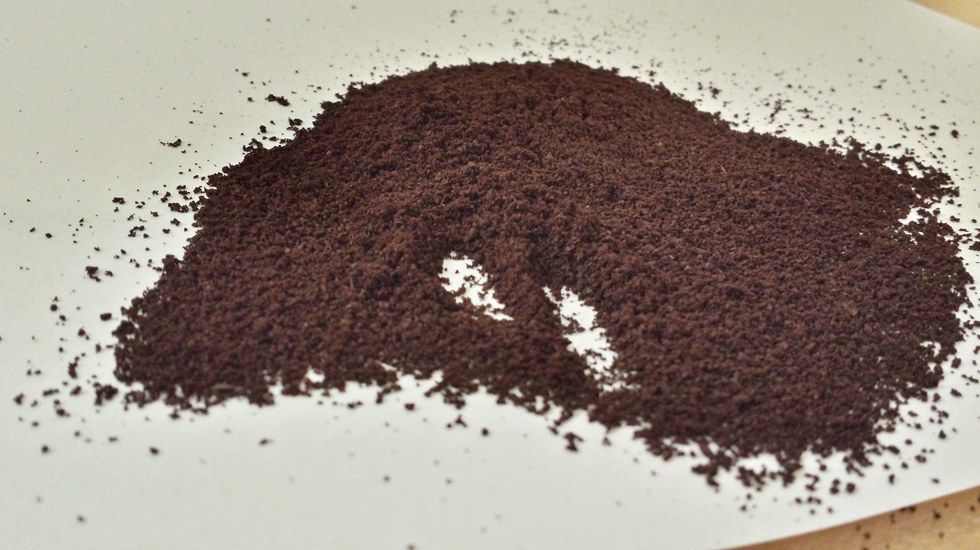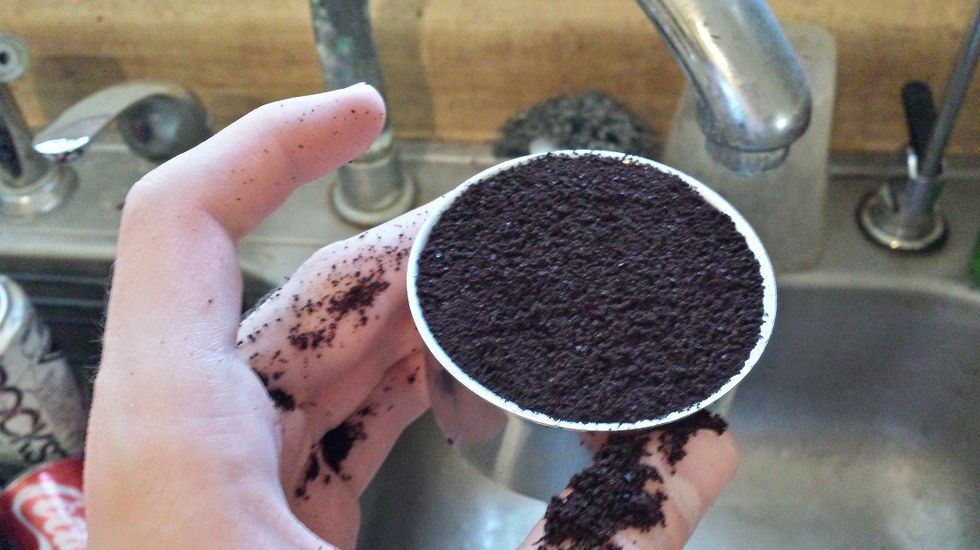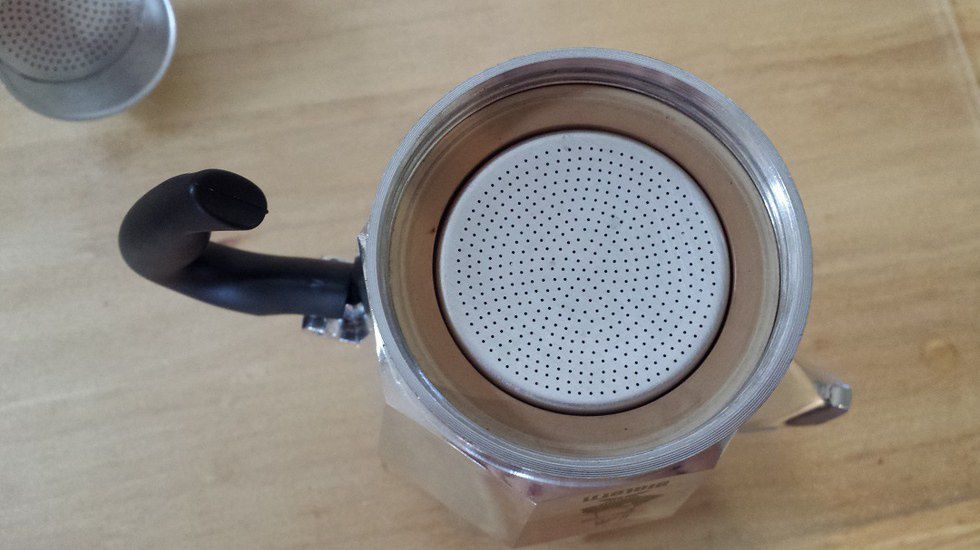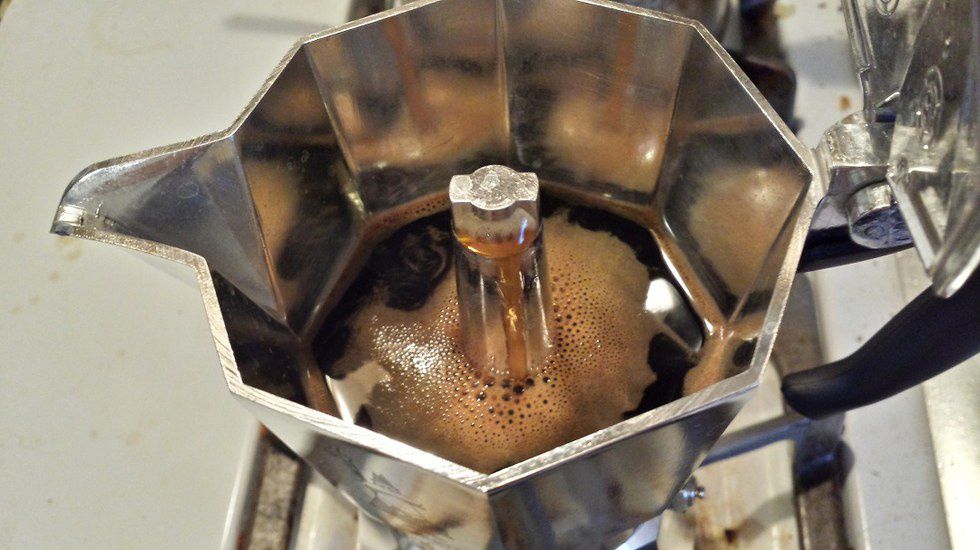Invented in Italy, the Bialetti Moka Pot is a coffee maker constructed out of fingerprint-loving aluminum, and is a staple in the kitchen's of houses across Europe and other parts of the world. Also known as a stove-top espresso machine, these little devices use the heat to build up pressure inside of the bottom housing full of water, which is then shot through the bed of coffee grounds that sits under a metal filter.
Designed in 1933, the Moka Pot changed the way that coffee was viewed in Italy. During that time, coffee was something that people would leave their homes to go and get from a local cafe, but the Moka Pot brought espresso-like flavor to the masses, and the design has hardly changed since its initial inception.
The coffee brewed in a Moka Pot is very similar to an espresso shot, and is comparable in method to how the first espresso shots were pulled via a steam driven machine. Seeing how the coffee is strong by most standards, it can contain a fair amount of caffeine. I mainly use mine as a, "lol I have woken up at 3:30 AM for the past four days straight, and I have an essay due tonight," brewing method. I'd use it more often, but it is a pain to wash, mainly because of all the sharp corners and difficult to reach parts.
In this article, I will be using the 6 cup size. Be advised, that the amount of cups advertised on the box is not equivalent to the unit of measurement, but a suggested serving size. Though, I generally just drink all of it myself, purely for the unique tasting coffee it produces. Bialetti sells models varying from 1 cup, all the way up to 12 cups for a bigger group of people.
First, fill the bottom portion with water to the line inside, and place it on the stove on a low heat setting. This will let the water heat up, and prevent the coffee from actually roasting itself during the brewing process, due to the prolonged heat exposure it would undergo otherwise.
Then, you will need to grind your coffee. For the 6 cup model, it takes roughly 4-5 tablespoons of coffee beans. You'll want to grind the coffee somewhat fine, as if the coffee is ground too coarse, it will taste very weak. However, if it is too fine, it will be super bitter, and could even cause a large pressure buildup that would cause the contraption to blow up. Because of a government mandated law way back when, there are pressure release valves built in to prevent any explosions.
Once the water has gotten pretty hot, fill the basket-filter-funnel-thing with coffee, and place it inside the bottom portion of the Moka Pot, then proceed to assemble it. To do this, simply turn the stove off, and using a potholder, hold the bottom portion and then screw on the top.
Note that there is a certain configuration to correctly put the filter inside of the top portion.
Now comes the fun. Once everything is assembled, turn on the stove, and set it for the lowest heat setting. During this process, I open the lid of the Moka Pot so I can see the coffee brewing. After a couple minutes, the coffee will start to rise through the filter and coffee grounds, and will trickle down the sides of the spout. Some individuals completely kill the heat at this point, but I keep mine going, because I do what I want.
Notice that lovely crema, but ignore how dirty my stove is. When you notice that the trail of coffee is starting to wane, you'll want to kill the heat to prevent any overextraction that could occur.
Once taken off the stove, this delicious coffee should be poured into pre-heated serving glasses, and consumed as is. It is common to add some form of dairy or sugar to this coffee, but seeing how that can pretty much destroy the flavor of the coffee, I tend to avoid that. Nah, do whatever you want really, you're the one drinking it.
Tips
1. Store the rubber gasket separate from the device, as the gasket smells pretty bad and can make anything around it smell like rubber. Though, it does not affect the flavor, it can just make your Moka Pot stink if it sits in it.
2. Use the freshest coffee you can, as this method of brewing can really highlight how long your pound of coffee has been sitting around.






































